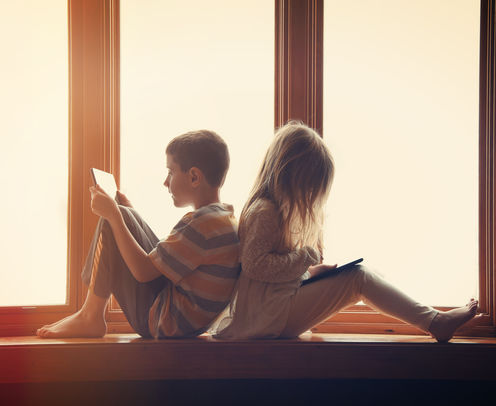
One of the most frustrating issues modern parents face is how to manage children’s screen time.
Official guidelines say kids aged five to 18 years should spend no more than two hours a day using screens, and children under two years should not use a screen at all. But in a world dominated by tablets and mobile phones, these limits are proving to be virtually impossible to uphold.
A recent online poll of 18,000 children by ABC children’s program Behind the News found that 56% of respondents exceed that two-hour daily limit.
A survey of 2,620 Australian children aged eight to 16 years had similar results. The study showed that 45% of eight-year-olds to 80% of 16-year-olds exceed the recommended less than two hours per day limit.
Guidelines obsolete
We tend to justify children’s “overuse” in terms of the irresponsibility of youth. But a different and very plausible explanation is that the guidelines we use to benchmark how long children should spend on a screen are out of date.
They were actually developed years before tablets and the many devices we use today were even invented.
The screen time guidelines we currently use were developed by The American Academy of Pediatrics in the 1990s to direct children’s television viewing. In particular, they were a response to kids watching violent content.
While the guidelines may have been relevant at that time, screens have changed a lot in the past 20 years, and children are showing us that an ironclad two hours is no longer workable if you’re growing up circa 2016.
The continued use of these guidelines has left many parents feeling frustrated, guilty or simply unsure about what to think or what to do. Parents try to get their child to stick to the time limits but it’s just not possible when they still have three hours of homework left to do on their laptop.
Sometimes, guidelines, rules, and even laws, are legally binding but so out of date that they no longer provide meaningful support.
For example, it was once a requirement in some parts of the United States and Canada for producers to make their margarine different colours to ensure consumers didn’t mix it up with butter. The last place in North America to stop this requirement was Quebec, in 2008.
While interesting and even amusing, many question the relevance of these laws to modern life.
It seems traditional guidelines that advise parents and educators on children’s screen use have followed the same path and just don’t fit with reality of today’s technology driven world.
A rethink in the works
In a nod to the increasing ubiquity of technology in our world, the American Academy of Paediatrics announced in October last year that it is beginning the process of revising its guidelines for children and screens. The academy says it has realised that in a world where screen time is becoming simply “time”, its policies must evolve or become obsolete.
The new formalised guidelines will be published later this year and many expect screen time allowed to be lengthened. It is unrealistic for high school students to only spend two hours per day on screens, particularly when school work obliges them to do that or more.
Time is also not necessarily the best measure to ensure children’s screen use is part of a healthy and balanced approach to life.
All screen use is not the same and it is expected that the new formalised guidelines will also acknowledge that children can use screens for very different purposes.
There’s consumption, there’s creation and there’s communication. There’s a big difference between endless hours of watching YouTube videos of chocolate sweets being unboxed to videochatting with a parent who is away from home.
Quality screen time
A better alternative is to determine children’s screen use based on the quality of the activity and the level of stimulation that children are getting.
There are more than 80,000 apps labelled as educational, but the quality of experience they offer differs. Activities that are creative, that stimulate imagination and that allow meaningful connection with others can and should be given more time than ones that offer little educational value.
We should still keep an eye out for excessive time online. About 15% of the respondents in the Behind the News survey reported they couldn’t go without technology for even one day.
Compulsive or non-stop checking of texts, emails, news feeds, websites or other apps can interfere with anyone’s daily life, work and relationships. If a child is spending most of their day and night on a screen, then that needs reassessment and management.
But the ultimate message is that whatever resource we use to manage children’s screen usage, they ultimately need to learn to manage it themselves.
We must introduce them to the concept of mindful usage. As children get older and accumulate more and more devices, and greater need to use technology, helping them recognise the importance of a balance becomes an important basic life skill.
Joanne Orlando does not work for, consult, own shares in or receive funding from any company or organization that would benefit from this article, and has disclosed no relevant affiliations beyond the academic appointment above.
